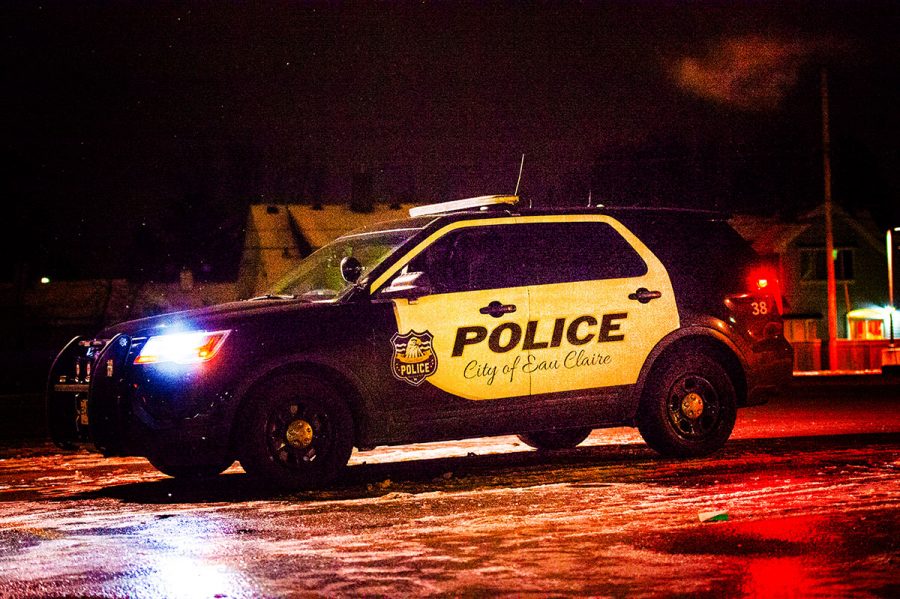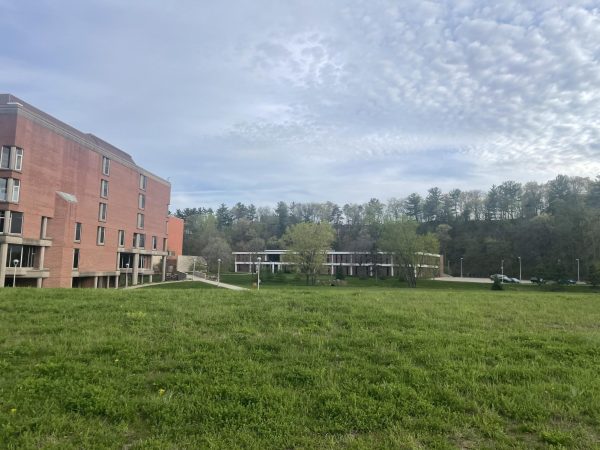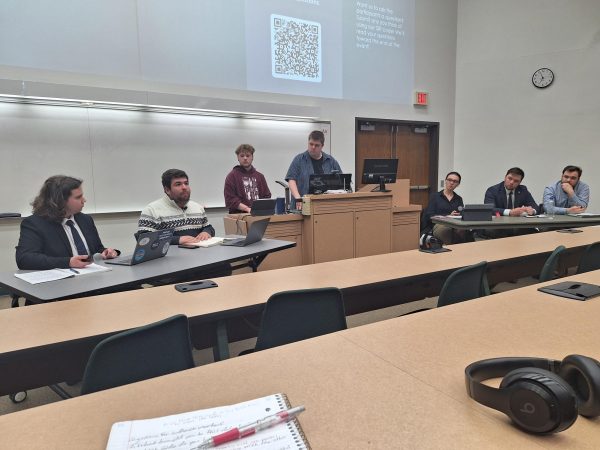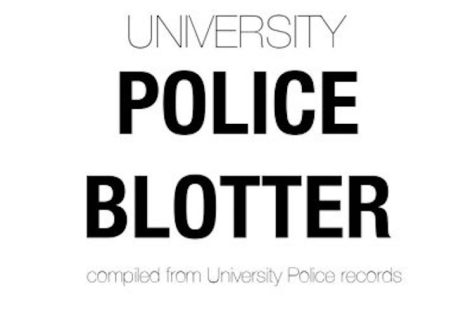Opinions divided over issue of racial profiling by local police
Expert: says available crime data is limited, discriminates against communities of color
Photo by Kelsey Lorraine
The Eau Claire Police Department is among 400 law enforcement agencies that adhere to the UCR program. (Kelsey Smith)
December 14, 2016
This is the second installment of an investigation into interactions between Eau Claire law enforcement and communities of color.
While expert opinions differ on racial profiling by local police officers, they agree mandated data collection of law enforcement agencies would provide clarity and a way to move forward regarding the issue.
The current data available to researchers — mostly arrest data — presents a limited, incomplete record of interactions between officers and communities of color. In turn, this data does not indicate external factors that disproportionately target certain ethnic groups over others. Without comprehensive data, it’s difficult to determine if agencies are racially profiling people of color.
For Crystal Patterson, racial profiling by Eau Claire Police Department officers is not a debate, it’s a harsh reality.
An African-American Eau Claire resident who moved from Philadelphia to the city in 2011, Patterson said her family is singled out by local law enforcement on a “daily basis” and this has forced her to contemplate leaving the area for the sake of her children.
“My teen boys have it worse than I do. My plans are as soon as they are free to move around I will move my family out of here and to somewhere we are welcomed,” she said. “Every time something happens in Eau Claire, they look for my son.”
An analysis of Uniform Crime Reporting (UCR) data indicates people of color, which number roughly 9-10 percent of Eau Claire’s population, account for 13.7 percent of arrests issued by the ECPD between 2011-2015.
ECPD Chief of Police Jerry Staniszewski declined to comment on the matter.
An agency’s arrest data, according to the UCR dashboard, indicates “All persons processed by arrest (booking), citation, or summons (when served by an officer) for committing an offense in its jurisdiction”
However, the UCR program categorizes race in a way that may distort the data. The user manual defines the demographic “white” as “a person having origins in any of the original peoples of Europe, the Middle East, or North Africa.”
While the manual does not mention Hispanics/Latinos, UW-Eau Claire Campus Police Lt. Jay Dobson said agencies also enter these individuals into the system as “white.”
For Hispanics, being labeled “white” doesn’t mean they’re treated as whites by officers or excluded from the experiences of other people of color.
Shanna Tores-Meyreles, a Hispanic Eau Claire resident originally from New York City, said local police are often “thrown to the streets” with limited experience on the job. In many cases, she said these officers will project their fears on minority communities.
As a result, she said officers have “targeted” her Dominican husband, herself and her daughter on multiple occasions.
“My daughter does not like police because of the many incidents that took place,” Tores-Meyreles said. “I honestly do not feel it was just at all. There was no apparent reason to be pulled over or have these interactions.”
Christina Narciso, a Brazilian national who with her Filipino husband and daughter moved to Eau Claire in 1974, criticized the atmosphere of prejudice she saw then and observes to this day. She excluded local police from this assessment.
“We have some people here who are prejudiced about anyone who doesn’t look like them or were born in another country,” Narciso said, judging from her own experience. “I am a Latina and an American citizen for 40 years now. I have been always treated with utmost respect by Eau Claire police officers.”
Professor of criminal justice Justin Patchin said individual accounts, while concerning in their own right, should be taken with a grain of salt.
He said only trusting anecdotes can, at best, exaggerate or mischaracterize the actions of officers.
“Every department is going to receive some reports of the perception of unfair treatment, whether it’s race or class or age,” Patchin said. “As a researcher and a social scientist, I want to see data. Are we seeing anomalies? Are we seeing rare cases being highlighted? Or is this a pattern of behavior in a department or by a group of officers in a department?”
However, the available crime presents an incomplete portrait of law enforcement performance, said Pamela Oliver, a professor of Sociology at UW-Madison, a national expert on racial incarceration disparities and a former member of Gov. Jim Doyle’s Racial Disparity Oversight Commission.
While it keeps a record of individuals who are cited or arrested by officers, she said this data is skewed by a number of external political, bureaucratic and societal pressures that target certain communities over others.
“In short, there’s no consistent association between crime, arrest and incarceration,” she said. “While it is certainly true that most people who end up in prison and a lot of people who are arrested actually did something wrong, it is not true that most people who do something wrong are arrested or end up in prison.”
According to the UCR data, people of color — which are about 13.8 percent of the state’s population according to the 2010 national census — accounted for almost a third of violent, property and drug-related arrests in Wisconsin last year.
On top of that, Oliver said, “There’s usually no data on traffic stops, stop-and-frisk, municipal tickets; the other ways people may be hassled or monitored by authorities.”
UCR Data, which only records individuals arrested or cited by officers, reflects this gap in the record, one that presents a sizable blind spot and hampers evaluation of law enforcement activities.
Patchin said it is difficult to properly judge the actions of the ECPD in the absence of concrete crime data. Without agreed-upon facts, it can be difficult to move past anecdotes, anomalies or false equivalencies in these discussions.
Patchin said officers are commonly expected to make a certain number of “contacts” during their shifts in order to document their activity as law enforcement. There are also other contextual factors in each interaction that have to be considered from the officer’s perspective.
“If you’re a cop and you’re working a beat for years and years, you start to develop not only an intuition, but you start to see the same kinds of people,” Patchin said. “Perhaps the kind of people you’re arresting fit a certain caricature. So maybe you’re targeting that caricature more often you otherwise would be. Is it right? Is it wrong? Is it racism or is it a consequence of the job?”
Patchin said distrust between communities of color and law enforcement are cyclical in nature. If one person says they’re feeling mistreated by cops, it may cause other individuals to take these accounts second-hand and approach future interactions with officers with distrust or hostility.
As a result, misconceptions on both sides ramp up tensions, Patchin said. He said he encourages people to file complaints if they feel mistreated by the Eau Claire Police Department.
“Even if nothing is going to happen, it’s important to do this,” he said. “At least with the command staff, they take this seriously. It becomes an issue when reports are made and those reports are not addressed. One or two anecdotes isn’t data, but a dozen or so anecdotes can add up to data.”
One way to address this shortage of information would be to increase the parameters of crime data collection to include any situation that involves an official officer inquiry or request for identification, Patchin said.
“If it’s a contact for the purpose of suspicious behavior, I think it makes sense to (record the race of the individual),” he said. “From a checks and balances standpoint, why wouldn’t you report who it was, what they were doing, and why it was suspicious?”
Oliver also expressed approval of expanded data collection, although she said law enforcement agencies rarely take it upon themselves to record the data, publish the information and risk self-incrimination.
“The way you deal with it is mandate data collection, which agencies don’t want to do,” she said. “The police tend to resist collecting the data because you can’t be punished for something nobody can prove you did.”
Oliver used the New York City Police Department as an example of the effectiveness of mandated data collection. While the city reported steadily decreasing crime rates as a result of its now famous “stop-and-frisk” policy, the state government pressured the NYPD into gathering detailed records regarding individuals affected by the practice.
As a result, according to the New York Civil Liberties Union website, almost 90 percent of people who were stopped and frisked between 2002-2011 were found to be either African-American or Latino, while 88 percent of all individuals stopped were innocent.
It was also found New York City’s crime downturn fell short of similar cities that did not use stop-and-frisk, including Baltimore, Los Angeles, New Orleans and Dallas.
Oliver said the Wisconsin State Legislature passed similar legislation for monitoring how law enforcement handled traffic stops in 2009. The legislation was repealed in 2010 after a majority change in the governing houses.











